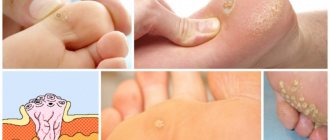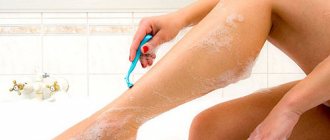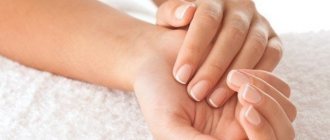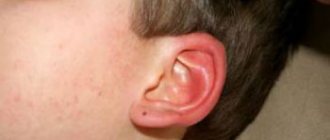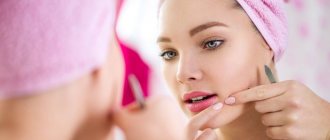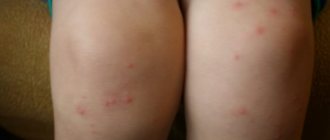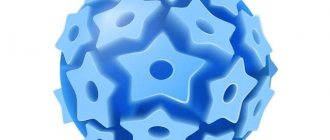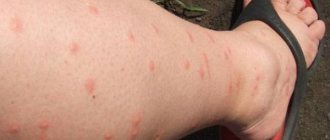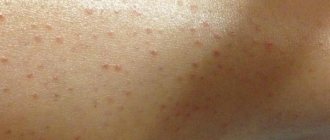How to avoid blisters?
Diseases of the epithelial integument not only bring discomfort to a person, but are also characterized by a rather unpleasant appearance. That is why most people feel complex when they appear.
When blisters with fluid appear on the feet, a person cannot lead a normal life, which is explained by the need for constant contact with shoes.
Features of neoplasms
In appearance, the neoplasms resemble a swollen top layer of skin. There is liquid inside them. These neoplasms are characterized by fairly dense epithelium . Their sizes can be varied.
The appearance of neoplasms of various sizes can be observed against the background of the same provoking factor. Between themselves, blisters can vary in color depending on the reasons for their appearance.
They may be slightly red or white-yellow in color.
In some cases, the neoplasms are surrounded by a ring that is darker in color. Sometimes several neoplasms merge into one bubble. When tumors appear, most patients experience itching and pain in the legs.
Causes of fluid blisters
The appearance of tumors on the legs can occur for a variety of reasons. These may include the negative influences of external factors, as well as various diseases.
Quite often the pathology is observed against the background of burns. They appear if a person spends a long time in a solarium or under the influence of direct sunlight.
When pathology appears against the background of this cause, the blisters become red in color. Neoplasms are characterized by severe pain. When insect bites, new growths may appear on the legs in various places.
If they appear on the foot or between the toes, this leads to discomfort. The simplest and most obvious factor in the occurrence of neoplasms is tight shoes, which often rub.
The appearance of a pathological condition is quite often observed against the background of various diseases:
- Skin diseases. If a person is diagnosed with diseases of the epidermis, then there may be no redness near the tumors. Most patients claim that the disease is not accompanied by itching. Skin diseases are characterized by a fairly long course, regardless of the chosen therapy method.
- Fungal diseases.
When exposed to fungi, neoplasms on the skin of the legs are observed quite often. Infection with a fungal infection is diagnosed in places of common use - baths, saunas, swimming pools. In the initial stages of the disease, slight redness appears on the legs. After a certain time, the skin begins to exfoliate in these areas. This may cause blistering or cracking of the skin. After a few days, the blisters may burst on their own. - Allergic reactions. When they appear, a rash appears on the patient’s legs, which in appearance resembles tiny blisters. During the course of this pathology, patients experience quite severe itching. In places where the rash appears, unbearable pain is diagnosed. In this case, it is recommended that the source of the allergy be determined.
If the patient is not sure that the cause of the appearance of tumors is an external factor, then he is recommended to seek help from a doctor who will not only make a correct diagnosis, but also prescribe rational treatment.
Types of watery blisters
Watery blisters can develop as a sign of many skin conditions.
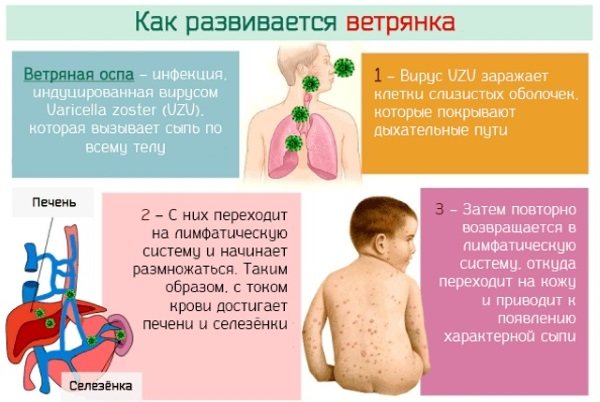
Watery blisters on the skin appear with chickenpox.
- Chicken pox. An itchy rash caused by the smallpox virus that resembles dew drops. The disease affects from 100 to 300 cells located in the mucous membranes of the throat, eyes, and genitals. Develops 10–21 days after exposure to the virus and 1–2 days after the onset of initial symptoms (headache, fatigue, fever). 8–12 hours after the bubbles appear, the liquid inside them becomes cloudy, they burst, forming a yellowish crust. New blisters appear at the healing sites, and subsequently a scar may appear.
- Shingles. A painful rash caused by reactivation of the same virus that causes chickenpox. Initial symptoms include burning, itching, and painful aching sensations where the rash appears. The virus invades nerve cells and reactivation develops along a nerve filament known as the dermatome, which is responsible for serving a specific area of skin on one side of the body or the other. When the blisters begin to rupture along the nerve strip, constant and excruciating pain occurs. The blisters heal within 7–10 days, but the pain may continue for months.
- Herpes. A disease caused by the herpes simplex virus. Once a person is exposed to herpes simplex, the virus takes up permanent residence in the body and occasionally causes rashes of watery blisters. Triggers for herpes outbreaks can include stress, fever, and excessive sun exposure. Herpes can be painful; the fluid contained in the blisters is transmitted to other people through kissing, sharing dishes and personal hygiene items. Healing occurs in 7–14 days, and the herpes disappears until the next outbreak.
- Dyshidrotic eczema. The itchy rash that develops with this disease affects the arms and legs. The disease is not contagious and is more common in people with atopic dermatitis. The rash visually resembles pudding; healing occurs no earlier than 3 weeks. It leaves behind red, dry, cracked scales.
- Scabies. Skin lesions caused by mites hiding under the epidermis. The red, bumpy rash turns into tiny, fluid-filled blisters. Appears on the wrist, between the fingers, under the arm and around the waist. Infection occurs through manual contact, through clothing and bedding.
- Dermatitis. Itchy rash, expressed by small blisters filled with liquid. Develops in response to a primary infection, usually fungal. The affected areas are on the sides of the fingers, on the chest and arms.
A blister is a cavity that is formed as a result of acute inflammation of the skin. The entire space is filled with a clear serous fluid (serum), sometimes mixed with blood.
Blisters with fluid on any part of the body are distinguished by type:
- vesicles - small formations up to 5 mm;
- bullae - single- or multi-cavity large blisters measuring 10 mm or more;
- pustules are cavities with purulent contents.
The rash is small and round in shape; large bullae may be asymmetrical.
The types of blisters depend on the severity:
- lungs. Water calluses and insect bites do not pose a threat if timely measures are taken to eliminate the problem;
- average. Blisters that appear from prolonged exposure to the scorching sun are considered a 2nd degree burn and require medical help, especially in cases of children. Fungal infections on the legs can spread quickly, making treatment much more difficult;
- heavy. A severe allergic reaction can cause Quincke's edema, which can be fatal. At the first signs of an allergy, you should urgently seek medical help. Infectious skin diseases are contagious and require immediate treatment to avoid spreading to the surface of the body and introducing additional infection. This may cause blood poisoning.
Providing first aid
If blisters appear on the patient’s legs, he is advised to ensure their integrity. In no case should you comb them or remove them mechanically, as this can lead to a worsening of the condition.
To prevent the bubble from bursting, it is recommended to ensure that it does not come into contact with clothing and shoes. When a new growth appears, it is recommended to cover it with a band-aid.
When the bubble reaches a large size and is excessively swollen, certain manipulations can be carried out to remove it. Before doing this, it is recommended to wash your hands with soap.
After this, it is recommended to dry them thoroughly and disinfect them using a special alcohol-based cosmetic product. It is also recommended to wipe the medical instrument with alcohol.
In most cases, an ordinary sewing needle is used to carry out the manipulation.
Punctures are made in places that are characterized by the location of healthy epithelium nearby. After the puncture, it is recommended to press the bottle lightly with your finger until the liquid flows out of it.
During the manipulation, it is strictly forbidden to remove the skin that covered the bubble. This will ensure the fastest possible process of tissue regeneration and healing.
Why blisters may appear on the soles of your feet, watch this video:
In order to ensure speedy healing, Levomekol is applied to the site of the bubble. It is recommended to seal it with adhesive tape on top. To avoid the inflammatory process on the epithelial surfaces, daily change of the dressing is recommended.
In this case, it is strictly forbidden to allow water to get under the patch. Patients are advised to periodically open the wound for 10-20 minutes to allow it to dry.
Puncture of a blister is a fairly simple procedure that can be performed by anyone. An important aspect in this case is compliance with hygiene standards.
Features of the treatment of blisters on the legs
If a patient develops a large number of tumors, it is recommended that they be treated without fail. In this case, it is recommended to follow certain rules.
To eliminate the unpleasant symptoms of the disease, the following is used:
- Lavender oils. It is recommended to apply it to the affected area and stick a patch on top. This medicine will be most effective if it is pre-mixed with products such as an oil solution of vitamin E or castor oil.
- Cream, the main component of which is aloe.
- Panthenol. With the help of this medication, the possibility of inflammatory processes occurring in places where tumors form is eliminated.
- Gewol healing patch. It is characterized by the presence of a special gel-forming substance, with the help of which the fastest healing of tumors is achieved. Thanks to the use of this medicine, not only pain is eliminated, but also the most effective protection of the epithelial covers from the negative influence of environmental factors is ensured.
Folk remedies
To eliminate tumors on the legs, traditional medicine is often used, which is characterized by high efficiency. In most cases, patients are recommended to use:
- Salt baths.
They are characterized by the presence of an antimicrobial effect, and also dry blisters with the highest quality. To carry out a bath, it is recommended to pour water into a basin, add salt and soak the affected area for 15-20 minutes. The procedure should be carried out three times a day. - Sequences. To prepare the medicine, it is recommended to take the dry crushed above-ground part of the plant in the amount of one tablespoon and pour a glass of boiling water. The medicine is infused for half an hour. The product is used for baths and lotions.
- Potassium permanganate. Baths are made using this product. To do this, potassium permanganate is added to warm water until it turns pink. It is recommended to take baths before bed every day. Their duration should be 10 minutes.
Traditional and folk medicine are characterized by a high effect in the treatment of neoplasms.
To avoid side effects, it is recommended that you consult your doctor before using a particular medication.
What is prohibited to do
When tumors appear in the leg area, it is recommended to adhere to certain prohibitions. A person is prohibited from piercing a blister with a needle without first disinfecting it.
After the bubble has burst, it is recommended to apply an antibiotic to it and cover the wound with a band-aid. It is strictly forbidden to leave it open, as this can lead to infection. After piercing the bubble, a film remains, which is not recommended to be torn off.
Doctors are prohibited from scratching blisters.
In order to eliminate itching, it is recommended to take appropriate antipruritic medications. If a person strictly adheres to the above rules, then the blisters will go away on their own without serious consequences.
Treatment of fungal rashes
Creams and ointments are used to treat mycotic rashes on the arms and legs. Some of them are sold without a prescription, tempting the patient to self-medicate, which can lead to disastrous results.
The most effective drugs for fungal rashes are:
- Ketoconazole . Slows down the growth of mycotic infection. To obtain a lasting effect, it is necessary to use the drug for 2 months.
- Kanesten . Has a wide spectrum of action. The product is used 3 times a day for a month.
- Terbinafine . The drug is available not only in the form of an ointment, but also in the form of powders and tablets. Used for a short time. Can be purchased without a doctor's prescription.
When to see a doctor
If tumors appear on the legs, in some cases it is recommended to seek help from a specialist. If severe pain is observed in the area of the tumor, this requires consultation with a specialist.
A visit to the doctor is also indicated if the temperature rises at the site of the blister formation. If pus or blood appears inside the bubble, it is recommended to immediately visit a medical center, as this indicates an inflammatory or infectious process.
An increase in body temperature indicates the seriousness of the situation. If inflammation occurs in the lymphatic system or a feeling of itching on the epithelial surfaces, it is recommended to consult a specialist.
If the patient experiences additional symptoms with blisters on the legs, this requires specific treatment.
Treatment of allergic rashes
The use of drugs for the treatment of allergic rashes on the legs can only be carried out as prescribed by a doctor.
Allergic rashes are often treated with ointments and creams. It is strictly forbidden to scratch acne, so as not to complicate the healing process.
Basic medications for the treatment of allergic rashes:
- Radevit . The ointment quickly relieves redness and peeling. Vitamins A, D, E, included in the ointment, increase the protective forces of inflamed skin areas.
- Traumeel . The ointment contains medicinal herbs that increase the local immunity of the skin. Quickly relieves skin irritation and itching.
- Fenistil . Hormonal ointment. The drug eliminates itching and swelling. Peeling of the skin stops.
- Belantin . The ointment is especially effective on wounds and cracks in the skin, healing them. The drug relieves skin inflammation.
- Advantan . Hormonal drug. The ointment is effective in cases where similar drugs are powerless.
